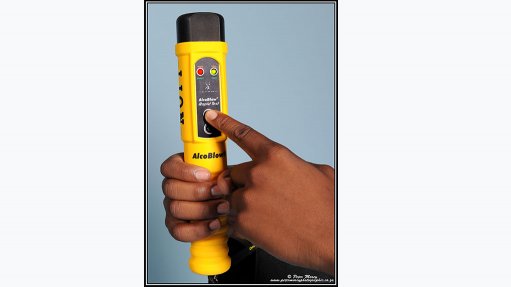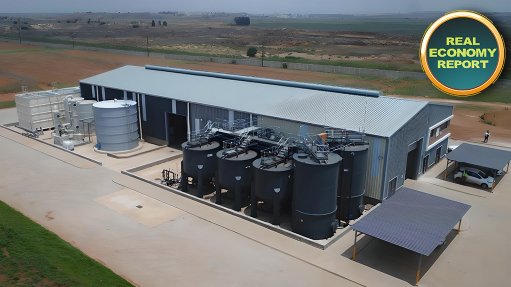Transforming acid mine water: Pioneering solutions to resolve looming water decantation challenges
Acid mine water, a persistent environmental issue caused by the oxidation of sulfide-bearing minerals embedded in coal and gold deposits, poses significant threats to ecosystems and water resources.
It is currently regarded as one of the most serious and notorious environmental concerns in South Africa and around the world, especially in areas with endemic mining activities. Acid mine drainage (AMD) is a bio-recalcitrant wastewater matrix, often discharged into the environment by both active and derelict mines, which necessitates proper treatment prior to its release to receiving environments. Unfortunately, regulatory frameworks are insufficient in addressing the decantation of AMD from abandoned mines and even some active operations due to a variety of administrative issues. Although AMD is more severe in closed and abandoned mines where pumps are turned off and the water tables rebound, it is less noticeable when mines are active because the water tables are kept low by pumping. Consequently, the uncontrolled release of acidic and metalliferous effluents leads to ecological stress, infrastructure corrosion and water contamination. To mitigate the dire consequences of AMD, novel and innovative approaches are required to effectively manage this hazardous and toxic wastewater matrix.
The Challenge of Acid Mine Drainage: AMD comprises elevated levels of various chemical species, including iron, aluminium, manganese, sulphates, heavy metals, metalloids, rare-earth metals, radionuclides and oxyanions. These toxic components not only harm aquatic organisms but also disrupt ecosystems, corrode infrastructure, and exacerbate water scarcity and food security concerns. Extensive eco-toxicological reports have highlighted the mutagenic, teratogenic and carcinogenic effects of AMD to living organisms on exposure hence underscoring the urgent need to tackle this pressing environmental issue. While several active and passive treatment technologies have been developed and implemented, their limited efficacy and generation of toxic sludge pose challenges in terms of secondary pollution and proper disposal. This has a significant impact on the policies of developing nations and their efforts to transition to a green economy.
South Africa's AMD Crisis: Acid mine drainage has reached a critical point in South Africa. The focus on AMD needs to be intensified considering the potential eco-toxicological effects and volumes of contaminated mine water from old and derelict gold mines in the Krugersdorp area. Specifically, gold mine sites can generate AMD for hundreds of years after commercial mining operations have ended.
Embracing Zero Liquid Discharge Technologies: Innovative sustainable technologies, effective management techniques and treatment approaches for AMD are urgently needed. This includes the creation of processes that produce almost no waste to the environment. Therefore, the development of efficient, innovative and cost-effective approaches is essential to appropriately address and handle these difficulties for a sustainable future. To overcome the limitations of conventional treatment methods, the implementation of novel zero-liquid discharge (ZLD) technologies assumes a pivotal role in minimising the ecological footprint of AMD. These innovative approaches offer promising solutions for mitigating the adverse impacts of AMD and enable resource recovery and drinking water reclamation from this hazardous wastewater matrix. By adopting and inspiring the reuse, recycle and circular economy paradigm, the ZLD technologies will fully crystallise, thus ensuring sustainable mine water management and holistic protection of the environment.
Unique Challenges and Opportunities in South Africa: South Africa’s major source of pollution comes from waste emanating from the coal and gold mines; thus, AMD gives rise to expensive environmental and socio-economic consequences. South Africa's mining industry, particularly coal mining, faces unique challenges with the long-term impacts of AMD on water quality, owing to its geographical composition, climate, population distribution, and the scale of deposits. As the industry enters a downturn phase, the urgency to address AMD-related issues becomes even more apparent. Therefore, leveraging onto emerging hybrid and integrated AMD treatment systems can revolutionise the quality of effluent emitted to receiving environmental compartments, paving the way for job creation, poverty alleviation, food security and environmental preservation.
Towards a Sustainable Future: To expedite the implementation of ground-breaking technologies, it is crucial for mining companies, government departments, interested parties, and rehabilitation funds to embrace their social responsibility and allocate resources towards ZLD, circular economy (CE), and waste beneficiation and valorisation programmes. By doing so, these entities can contribute not only to resolving the looming problems associated with acid mine water but also to broader societal and environmental goals.
With a collective commitment to innovation and responsible action, we can ensure a future where the decantation of acid mine water is no longer a threat to our ecosystems and water resources.
Dr Ryneth Mbhele is a research group leader at the CSIRs Water Research Centre. She holds a PhD in Industrial Chemistry from the University of Pretoria.
Email: rmbhele@csir.co.za
Comments
Press Office
Announcements
What's On
Subscribe to improve your user experience...
Option 1 (equivalent of R125 a month):
Receive a weekly copy of Creamer Media's Engineering News & Mining Weekly magazine
(print copy for those in South Africa and e-magazine for those outside of South Africa)
Receive daily email newsletters
Access to full search results
Access archive of magazine back copies
Access to Projects in Progress
Access to ONE Research Report of your choice in PDF format
Option 2 (equivalent of R375 a month):
All benefits from Option 1
PLUS
Access to Creamer Media's Research Channel Africa for ALL Research Reports, in PDF format, on various industrial and mining sectors
including Electricity; Water; Energy Transition; Hydrogen; Roads, Rail and Ports; Coal; Gold; Platinum; Battery Metals; etc.
Already a subscriber?
Forgotten your password?
Receive weekly copy of Creamer Media's Engineering News & Mining Weekly magazine (print copy for those in South Africa and e-magazine for those outside of South Africa)
➕
Recieve daily email newsletters
➕
Access to full search results
➕
Access archive of magazine back copies
➕
Access to Projects in Progress
➕
Access to ONE Research Report of your choice in PDF format
RESEARCH CHANNEL AFRICA
R4500 (equivalent of R375 a month)
SUBSCRIBEAll benefits from Option 1
➕
Access to Creamer Media's Research Channel Africa for ALL Research Reports on various industrial and mining sectors, in PDF format, including on:
Electricity
➕
Water
➕
Energy Transition
➕
Hydrogen
➕
Roads, Rail and Ports
➕
Coal
➕
Gold
➕
Platinum
➕
Battery Metals
➕
etc.
Receive all benefits from Option 1 or Option 2 delivered to numerous people at your company
➕
Multiple User names and Passwords for simultaneous log-ins
➕
Intranet integration access to all in your organisation





















